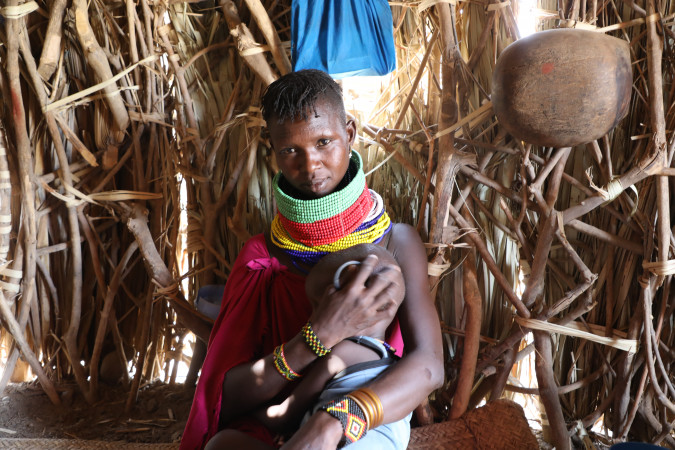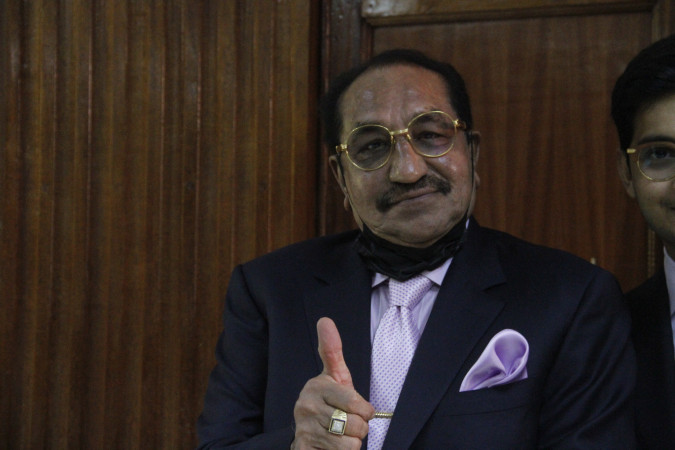Raising our children, the Montessori way

Toddlers, especially, are much happier when they are allowed ample time and space to work, play, make choices, and figure things out for themselves.
When it’s time to go outside for play time in Ivy Nyagothie’s household, 14-month-old Kay will hold her mother’s hand and walk her in the direction she desires.
Kay will stop to feel leaves and pick a stone along the way and when she is tired, she will cue that it is time to go back in the house for some rest.
After a nap, Kay will walk into her playroom and directly pick the toy she desires, manipulating them with ease at the skill of a five-year-old. At her age, Kay has already learnt to feed herself.
Ivy is raising her daughter the Montesssori way. The Montessori way of parenting is a method that has been gaining traction in the recent past.
Although not a modern concept, several young parents swear by it in bringing up independent and confident children.
Relaxed approach
Drawn from the teachings of Italian physician Maria Montessori, this form of parenting is a relaxed approach and emphasises independence, communication, positive discipline, respect for children and allowing children to work at their own pace.
It mainly focuses on a child’s needs for learning through play and their desire to take on responsibilities such as feeding themselves through baby-led weaning, exploring nature through baby-led walks and dressing themselves.
“You have to be respectful of your child as a parent. You shouldn’t shout or hit the child. It also requires the parent to be patient, repetitive and consistent,” says Ivy who started practicing Montessori when her daughter was five months old and whose instagram page, @montessorindme helps parents navigate the system.
The Montessori way is for the parent who loves order and is intentional about her parenting because it actively teaches the child how to live a practical life.
Wanjiru Kihusa actively started adopting the Montessori approach last year when she and her family moved to Dubai.
She loved the concept that children learn as they play. “For instance, when my son Keith is splashing water or taking a shower, he is learning about floating and sinking. I think it would be unfortunate if we consider school as the only learning that happens,” she says.
Being home alone with a child during a pandemic year and a lockdown, Wanjiru had only two options, to either let her child have endless hours of screentime, or structure their time together.
“The Montessori approach allows children and their parents to spend fruitful time together. I wanted to be deliberate with our time. So, I dedicated a corner in the house where we learnt letters and numbers.
I set up a sand box where we could draw letters. He also helped me in the Kitchen,” she says stressing that parents have to learn to let their children make messes because that is how they learn.
Zain Nasser, who runs @theplayroomke on Instagram, practices a mix of all learning models including Montessori, Wardolf and Kenya Institute of Curriculum Development systems with her two children; four-year-old Adam and 15-month-old Nuri.
“Exponential growth in a child happens in the first five years of a child’s life, but children only start formal schooling in Kenya when they turn three. I cannot wait until they get to school to take advantage of this learning phase. That is why I started practically teaching them literacy and numerical skills together with other life skills at home,” says Zain.
Proponents of Montessori refer to the first three years of a child’s life as “The Absorbent Mind” because the child learns without being taught.
According to the Absorbent Mind, a book by Maria Montessori, if we compare our ability as adults to that of a child, it would require us 60 years of hard work to achieve what a child achieved in these first three years.
The three mothers all agree that even though the Montessori way of parenting requires resources such as toy and “Do-it-yourself” materials, it does not have to be expensive.
“I understand why parents would think this approach is expensive. There are a lot of marketers duping parents into buying expensive toys by placing a Montessori tag on them even when they are not.
Most schools teaching the Montessori approach are also expensive. But Maria Montessori started this approach for all income brackets,” says Ivy.
Not expensive
Wanjiru says the system is not expensive and a parent can use everyday items to encourage learning.
“You can give your child a spoon and a container with cereals to transfer to another container. That is inexpensive and will help with fine motor skills,” she gives an example…
Zain advises parents to shop for toys and books that will grow with the child and preferably shop second-hand because it is cheaper.
This method of parenting, Ivy says, is not for every home. It needs dedication and time.
“As a parent, you have to learn first before you can teach your child. That takes time and a lot of dedication,” says Ivy.
Zain agrees saying that it can be exhausting. But she says she enjoys it and it comes easy for her.
When selecting toys, Ivy considers toys she can simplify. If the toy is complicated and all jumbled up, it will not help her daughter learn.
As is with Zain, she prefers toys made from wood, which although expensive in the short run, their durability makes them cheaper, especially because siblings can use them too.
“When I am buying books, I consider what my child is showing interest in. I also look for positive and bias-breaking books that show diversity, people who look like my children and also people who are different from them. I will go for a black doll anytime and I am deliberate about normalising black success,” says Zain.















